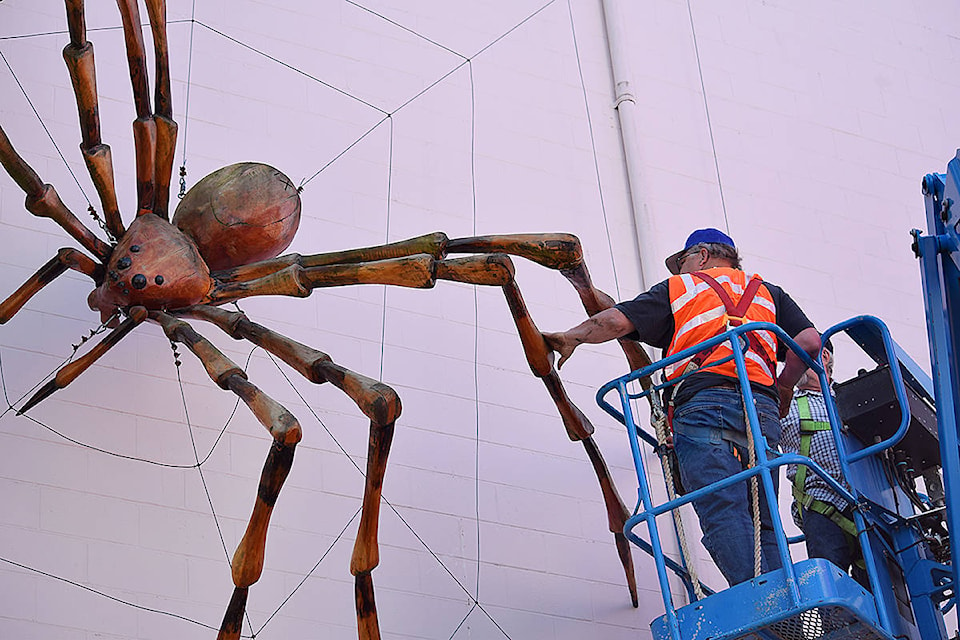As we look towards fall, many British Columbians register the vivid presence of eight-legged interlopers out in force throughout the province.
Royal BC Museum entomology collections manager Claudia Copley and research associate Dr. Robb Bennett, have provided some spider-season facts to help people prepare.
First, Copley and Bennett note that at this time of year, we are not seeing increased numbers of spiders, but an increase in their visibility (a distinction that’s still not comforting for arachnophobes). Spiders such as Garden Cross Spiders (Araneus diadematus) are much smaller earlier in the year but become more obvious to humans as their size increases. At this time of year, female orb-web spiders (such as the Garden Cross Spiders) have large abdomens filled with eggs and are often easier to spot.
The largest spiders in B.C. are Giant House Spiders (Eratigena duellica) which can grow to be as large as 10 cm (about the size of a man’s palm) including their legs – though when they make that dash under your couch, they seem much bigger!
Copley indicates that all these spiders are completely harmless. Species that often get noticed are one of the Eratigena/Tegenaria types (often incorrectly referred to as wolf spiders):
· Hobo (Eratigena agrestis),
· Giant House (Eratigena duellica), and
· House Spiders (Tegenaria domestica).
Two native species in our area are also more visible at this time of year: Callobius severus (no common name for this stern little arachnid) and Antrodiaetus pacificus, the Pacific Folding Door Spider. Folding Door Spiders are related to tarantulas and are very long-lived, with some females living up to 20 years. However, these species are much less commonly sighted because they are not as well-adapted to living around human homes (phew!).
Looking for love in all the wrong places, some male spiders become mature at this time of year and start to wander around looking for a mate. They end up entering homes as any guest would – through the front door. To avoid this, Copley suggests purchasing a door sweep, which will not only deter spiders but also save money on energy.
All these spiders are harmless and very unlikely to bite unless provoked. If you believe you have been bitten by a spider and have been prescribed antibiotics by a doctor, this indicates that the bite was not from a spider. Spider venom does not contain bacteria. In fact, most supposed “spider bites” are caused by other organisms (especially blood-feeding insects such as fleas).
British Columbia is home to almost 900 species of spider, many of which are far from human habitat. Bennett estimates that an astounding 20-30 additional species of spider are recorded in B.C. each year as a result of scientific expeditions to previously unexplored regions of the province. In the summer of 2018, Royal BC Museum researchers participated in BC alpine fieldwork — the ninth year of entomology collection efforts.
Visit the Royal BC Museum Learning Portal for more spider fun:
https://learning.royalbcmuseum.bc.ca/search-results/?search_field=spiders
